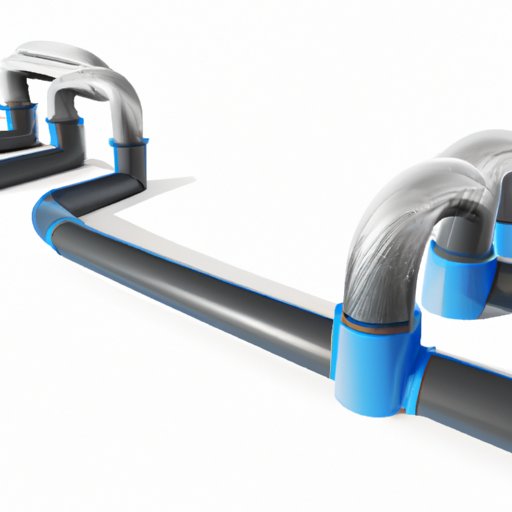Introduction
Pipelining is a concept in computer architecture that has been around since the 1950s. It involves breaking down complex tasks into smaller, more manageable pieces and then executing them in parallel in order to improve overall performance. In this article, we will explore what pipelining is, how it works, and the benefits and drawbacks associated with its use in computer architecture.

Exploring the Components of a Pipeline in Computer Architecture
A pipeline is a sequence of instructions that are executed in parallel. Each instruction is broken down into smaller sub-instructions, which can be executed simultaneously. This process increases the speed of the overall operation, as well as the throughput of the system.
The main components of a pipeline include an instruction fetch unit, a decode unit, an execution unit, and a write-back unit. The instruction fetch unit retrieves the instruction from memory. The decode unit decodes the instruction, which involves breaking it down into its component parts. The execution unit executes the instruction, and the write-back unit stores the result of the instruction in memory.
A Beginner’s Guide to Understanding Pipelines in Computer Architecture
Understanding the sequence of instructions in a pipeline is essential for understanding how pipelines work. The first step is the instruction fetch phase. This is where the instruction is retrieved from memory. The next step is the decode phase, where the instruction is decoded into its component parts. Once the instruction is decoded, it is sent to the execution phase, where it is executed. Finally, the result of the instruction is written back to memory in the write-back phase.
How Pipelining Improves Computer Architecture Performance
Pipelining improves computer architecture performance in two ways. First, it increases the throughput of the system. By allowing multiple instructions to be processed at the same time, the total number of instructions that can be completed within a given period of time increases. Secondly, pipelining reduces latency. Because instructions are processed in parallel, they do not have to wait for other instructions to complete before they can start being processed, thus reducing the amount of time it takes for an instruction to complete.

An Overview of the Benefits of Pipelining in Computer Architecture
Pipelining offers several advantages for computer architecture. Firstly, it increases the efficiency of the system. By allowing instructions to be processed in parallel, the time it takes for an instruction to complete is reduced, thus increasing the overall efficiency of the system. Additionally, pipelining provides greater flexibility. By allowing multiple instructions to be processed at once, developers can create more complex programs that run faster and require less processing power.

Investigating the Benefits and Drawbacks of Pipelining in Computer Architecture
While there are numerous benefits to using pipelines in computer architecture, there are also some drawbacks. One of the biggest drawbacks is that pipelines can be difficult to debug. When multiple instructions are being processed in parallel, it can be difficult to trace the source of any errors or bugs. Additionally, if the pipeline is not properly implemented, it can lead to increased overhead and decreased performance.
Conclusion
Pipelining is an important concept in computer architecture that allows developers to increase the efficiency and performance of their systems. By breaking down complex instructions into smaller, more manageable pieces, pipelines enable instructions to be processed in parallel, thus increasing throughput and reducing latency. However, pipelines can be difficult to debug and if not properly implemented, can lead to increased overhead and decreased performance. Ultimately, understanding the benefits and drawbacks of pipelines in computer architecture is key to making informed decisions about implementation.
(Note: Is this article not meeting your expectations? Do you have knowledge or insights to share? Unlock new opportunities and expand your reach by joining our authors team. Click Registration to join us and share your expertise with our readers.)
